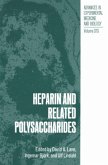At one time, it was thought that only eukaryotic cells could glycosylate proteins. Two major kinds of glycoproteins were recognized in animal cells, consisting of O- or N-linked saccharides. The O-linked saccharides were derived from gly- sylation of threonine or serine, whereas N-linked saccharides were derived from asparagine. In recent years, numerous glycoproteins have been found in bacteria, many of which do not possess typical animal cell glycosylation patterns. One of the purposes of this volume is to provide a thorough discussion of c- bohydrate peptide linkages in bacteria. Interestingly, though Braun s lipoprotein of some gram-negative bacteria was discovered nearly three decades ago, it was never considered to be a glycoprotein, even though it possessed a peptide car- hydrate linkage. In the past few years, it is clear that even gram-positive cells can covalently bind proteins to their cell walls. The role of carbohydrates in the rec- nition of animal cells by bacteriais now well established. Saccharide-specific - hesins have been sequenced, cloned and employed as potential vaccines. Furth- more, carbohydrate receptors on animal cells for bacterial adhesins have been identified and characterized. Another purpose for this volume is to provide a forum for new information on adhesin receptor complexes involving bacterial pathogens. There now is a b- geoning literature on carbohydrate structure, function, and molecular biology in bacteria. The role of carbohydrates in biotechnology and biomass utilization has become important in the past decade due to new methods for carbohydrate det- tion and the cloning of biosynthetic and degradative enzymes.
`Overall the book provides an extensive review of our understanding of glycomicrobiology and reveals that the subject is still in the logarithmic phase of growth. The book will therefore be an important source of information and relevant literature references to active researchers in the field.'
The Journal of Medical Microbiology, 50:5 (2001)
`This book is of greatest use as a reference for researchers interested in the biochemistry of (mainly) surface-expressed glycosylated peptides and lipids. It is extremely comprehensively referenced '
Journal of Antimicrobial Chemotherapy, 49 (2002)
The Journal of Medical Microbiology, 50:5 (2001)
`This book is of greatest use as a reference for researchers interested in the biochemistry of (mainly) surface-expressed glycosylated peptides and lipids. It is extremely comprehensively referenced '
Journal of Antimicrobial Chemotherapy, 49 (2002)
`Overall the book provides an extensive review of our understanding of glycomicrobiology and reveals that the subject is still in the logarithmic phase of growth. The book will therefore be an important source of information and relevant literature references to active researchers in the field.'
The Journal of Medical Microbiology, 50:5 (2001)
`This book is of greatest use as a reference for researchers interested in the biochemistry of (mainly) surface-expressed glycosylated peptides and lipids. It is extremely comprehensively referenced '
Journal of Antimicrobial Chemotherapy, 49 (2002)
The Journal of Medical Microbiology, 50:5 (2001)
`This book is of greatest use as a reference for researchers interested in the biochemistry of (mainly) surface-expressed glycosylated peptides and lipids. It is extremely comprehensively referenced '
Journal of Antimicrobial Chemotherapy, 49 (2002)








